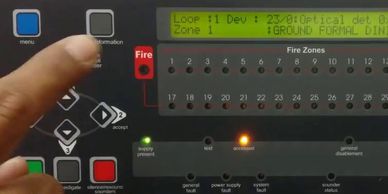FIRE ALARMS TO BS5839
DO WE NEED A FIRE ALARM

Why are fire alarms important?
Many people do not have fire alarm systems installed in their homes or premises. Many assume that they are able to smell smoke when they are asleep or wake up in time to escape in case of a fire emergency. or be able to evacuate in time as the building isn’t so big. Well, this is not true at all. Studies have been conducted and it has been proven that people’s sleep are disrupted when there is sound or noise, but it is NOT the case with smell. Our sense of smell is lost when we are asleep, and every workplace should have means of evacuating all employees and customers.
LEGISLATION

Automatic Fire Detection and Alarm Systems are governed by a Code of Practice for Design, installation and maintenance known as BS5839-1:2017. This Code of Practice comprehensively governs such systems and if followed is accepted as current good practice. The decision as to the requirement of such a system is arrived at via the ‘Fire Risk Assessment’ process and Legislative Requirements. Under the Regulatory Reform (Fire Safety) Order 2005, all existing buildings, apart from domestic buildings, need to have a fire risk assessment carried out. The legislation is designed to provide a minimum fire safety standard that all businesses need to follow
TYPES OF FIRE ALARMS

Fire alarms generally operate on the same principle, i.e. an alarm triggered by a smoke or heat detector or a manual break point, most systems fall under one of the following three categories: Conventional fire alarms – these consist of a central control panel wired up to different fire detection zones. Addressable fire alarm systems – these are a more sophisticated type of system which can be programmed to take additional actions in order to protect the premises. Radio or wireless fire alarm systems – these types of system can function in a similar way but uses radio signals instead of wires to send information to the panel.
SMOKE DETECTORS

Automatic devices which monitor the air and a photocell sees the smoke and activates the fire alarm system
CALL POINTS

Where you can manually operate the system to go into a full evacuation where all the sounders or bells will start once the button is pressed
CONTROL PANELS

The main control point to be able to silence or reset the system, or to see the exact detector which is in a fire condition.
Site Content
FIRE EXTINGUISHERS AND SERVICING

AIR SAMPLING SYSTEMS

EXTINGUISHING SYSTEMS

LINEAR HEAT SYSTEMS

